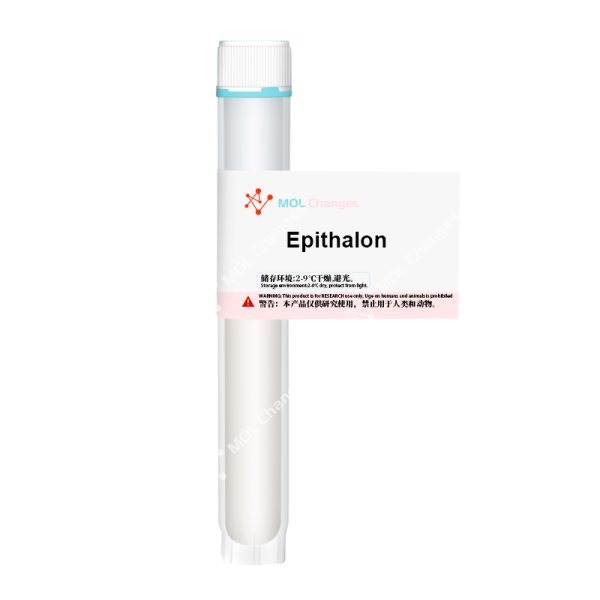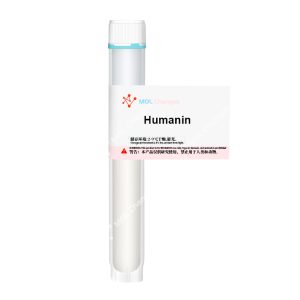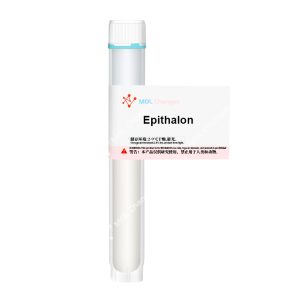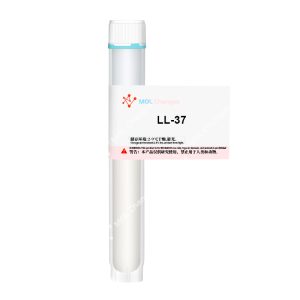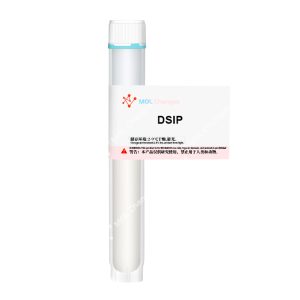Epithalon is a bioactive tetrapeptide discovered and refined through functional studies of the pineal gland. The specific amino acid sequence is Ala-Glu-Asp-Gly.
During the 1980s, Russian scientists carried out systematic research into the pineal gland’s regulatory role within various biological aging processes. Bioactive small-molecule peptide fragments were isolated and characterized as part of this work;
Epithalon itself was developed from one such active fragment. Optimization of this peptide led to its successful artificial synthesis.
Belonging to the more defined category of bioregulatory peptides, Epithalon specifically recognizes certain forms of gene expression and subsequent cellular functions.
Extensive in vivo and various types of in vitro experiments have shown that it uniquely activates the expression of telomerase reverse transcriptase (TERT) – the catalytic subunit of telomerase – which is a near universal core mechanism of cellular aging.
Telomerase synthesizes (and to a large extent compensates for) the loss of telomere length at chromosome ends; repeated cell division causes this loss. Extending telomere length directly improves the in vitro replication limits of cells, slowing all associated ‘signs’ of true cellular aging.
Animal models have demonstrated significant effects from Epithalon: biological lifespan extension, at least partial reversal of age-related physiological decline, immune system regulation, inhibition of (some) tumorigenesis, and to a point endocrine balance restoration.
Modifying key gene expressions and possessing (to some degree) antioxidant properties are believed to be the underlying causes of all of the above. Epithalon, as a result, remains a highly regarded bioactive compound in all lines of anti-aging research.
序列
H-Ala-Glu-Asp-Gly-OH
化学文摘社编号
307297-39-8
分子式
C14H22N4O9
分子量
390.35
Research Of Epithalon
1.Anti-aging Effects
Telomeres are specialized DNA-protein complexes located at the ends of eukaryotic chromosomes. Their primary function is shielding chromosome ends from being recognized as DNA damage; preventing any form of chromosomal degradation is of great importance. Each cell division results in a slight shortening of these telomeres.
Reaching a minimal length triggers replicative senescence or various DNA damage response mechanisms; arrest of cell division (specifically at the G1 phase) and the subsequent secretion of several hormones associated with cellular aging is the end result.
Telomerase, a ribonucleoprotein reverse transcriptase, promotes the synthesis of this telomere DNA and adding it back to the end of the chromosome – compensating for the previous shortening. Epithalon specifically activates the TERT gene responsible for this activity, fundamentally regulating telomerase.
Animal model studies have shown periodic injections to significantly extend lifespan, delay multiple aspects of age-related physiological decline, reduce (near complete elimination) various pathologies of aging, and all around modulating key senescence pathways.
2.Antioxidant and anti-inflammatory effects
Drosophila melanogaster is a well established model for evaluating lipid peroxidation levels. During the larval stage the addition of 0.00001% Epithalon successfully inhibited the expected increase in said peroxidation. Potent antioxidant and to a large extent anti-inflammatory effects are indicated by this result.
A separate study looking at different concentrations of Epithalon on early development found mature and aged adult flies to be the primary recipients of its effects. Genotoxicity was not observed.
3.Antitumor Potential
Epithalon reduces chromosomal instability; chromosomal deletions and various forms of mutation directly affect biological DNA. DNA deficiencies are typically the primary cause of cellular carcinogenesis.
A long-term double-blind study demonstrated a direct reduction in both tumor incidence and diversity from Epithalon treatment. An active role in inhibiting more specific aspects of tumor development is also observed. Treating tumors of identical size and location, long-term therapy with Epithalon resulted in significantly smaller subsequent tumor growth.
4.Endocrine Regulatory Effects
Epithalon is a bioactive agent capable of significantly influencing the behavior of gastric endocrine cells.
An experiment using middle-aged rats saw the pineal gland removed from the subjects; the experimental group received continuous Epithalon administration. Counting of gastrin-producing and somatostatin-producing cells showed near perfect preservation of the desired endocrine cell types compared to controls. Mitigating the near-complete loss of these cells following pineal removal is a clear indication of Epithalon’s effect on at least some form of gastric endocrine cell behavior.
5.Tissue Regeneration and Repair Function
Epithalon exhibits a certain similarity to retinoids. Examining retinal tissue morphology in middle aged mice, continuous Epithalon treatment preserved all retinal structures; complete retinal destruction was seen in untreated mice.
Retinal layers treated with Epithalon maintained their integrity, with increases in what can only be described as ‘functional activity zones’. A clinical trial of patients (162 total, various ages) with retinitis pigmentosa is currently being followed; visual acuity improvements of 0.15-0.25 have been reported, along with all round visual field coverage (to some degree). Side effects have not been reported.
6.Improving Metabolic Function
In 2004, another experiment on macaque monkeys demonstrated Epithalon’s effect specifically on blood glucose levels. Young and aged monkeys received intramuscular injections of Epithalon; subsequent blood glucose measurements were taken.
Prior to administration, the aged monkeys showed significantly higher initial blood glucose levels. Post-dosing measurements revealed a clear and marked reduction in these levels for the older monkeys. Returning to baseline (at least temporarily) was observed one month after discontinuation of the administration.⁶
7.Immune System Regulation
Studies using organotypic cultures of primary rat fibroblasts and various rat skin explants indicate some form of immune system regulatory function that Epithalon exhibits, at least within skin tissue.
Analysis of the treated cells showed increased (significantly so) SOD-1 and NQO1 expression – both being well documented antioxidant/enzymatic markers. Promoting this type of ‘immune’ or at least protective, regulatory function is something scientists have pointed to as a positive outcome.
8.Neuroprotection and Cognitive Enhancement
Learning capacity was the focus of several studies; protection and repair of neurons (antioxidant effects being a large part of this process, along with more subtle neurotransmitter and near-term neurotrophic factor related improvements) are what Epithalon is capable of achieving.
Improved learning ability in aged monkeys is a direct result of all of the above mentioned factors.
COA
高效液相色谱法
MS




